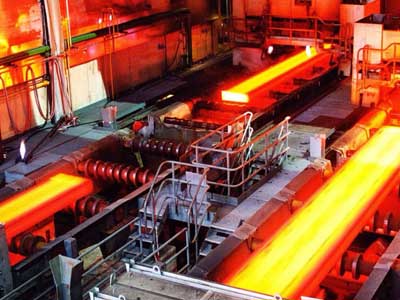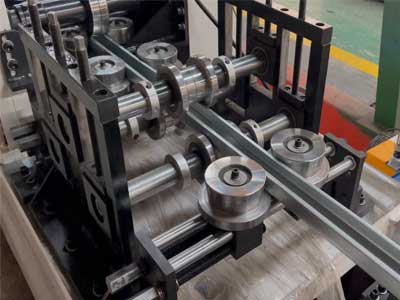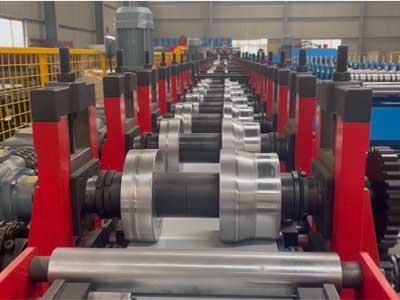Hot Rolled Steel vs Cold Rolled Steel
- Home
- Hot Rolled Steel vs Cold Rolled Steel
Hot Rolled Steel
Hot rolled steel is a crucial component in modern industry and is known for its versatile applications and cost effectiveness. This type of steel is produced by heating steel slabs above their recrystallization temperature, typically over 1,700°F (about 927°C), then rolling them into desired shapes and sizes. The process involves passing the heated steel through rollers that gradually reduce its thickness while maintaining its ductility. The end product is characterized by a rough, scaly surface texture and less precise dimensional accuracy than cold rolled steel. However, the advantages of hot rolled steel lie in its low cost and its suitability for applications where precise shapes and tolerances are not critical, such as in the construction of rail tracks, I beams, and industrial machinery.
Pros and Cons of hot rolled steel
Hot rolled steel, a product made by rolling steel at high temperatures, is widely used in construction and manufacturing due to its distinct advantages. One of the primary benefits of hot rolled steel is its cost effectiveness. The high temperature process allows for easier shaping and forming, resulting in lower production costs and making it an economical choice for large scale projects. Additionally, hot rolled steel exhibits excellent ductility and malleability, allowing it to be easily molded into various shapes and sizes, which is beneficial for creating customized components. Its high strength and durability also make it suitable for structural applications, such as in beams, columns, and frames, where robustness and resistance to deformation under load are critical.


Applications of Hot Rolled Steel:
Hot rolled steel is an essential material in various sectors due to its versatility and cost effectiveness. One of its primary applications is in the construction industry, where it is used for structural components such as I beams, channels, and angles. These components form the backbone of many buildings and infrastructure projects, providing the necessary strength and support for large scale structures. Hot rolled steel’s ability to be produced in large quantities and formed into a variety of shapes makes it ideal for the construction of bridges, skyscrapers, and industrial buildings. Its robustness and durability are crucial for these applications, where long-term structural integrity is paramount.
Cold Rolled Steel:
Cold rolled steel is a type of steel that is processed through rolling at room temperature, after being cooled from the hot rolling process. This method enhances the steel’s properties, resulting in a product with a smooth surface finish and greater precision in dimensions compared to hot rolled steel. The cold rolling process involves passing the steel through rollers at temperatures below its recrystallization point, which increases its strength and hardness through strain hardening. This refined process yields a higher quality product that is ideal for applications requiring precise tolerances and superior surface qualities. Cold rolled steel is often used in the production of consumer goods such as appliances, furniture, and automotive body panels, where appearance and precision are crucial.
Pros and Cons of Cold Rolled Steel:
Cold rolled steel, known for its refined finish and high precision, offers numerous advantages that make it a valuable material across various industries. One of the primary benefits is its superior surface quality. The cold rolling process, which occurs at room temperature, ensures a smoother, more polished surface compared to hot rolled steel. This makes cold rolled steel particularly suitable for applications where aesthetics are important, such as in the manufacture of automotive body panels, household appliances, and high end metal furniture.
Furthermore, the process enhances the steel’s mechanical properties, resulting in increased strength and hardness due to strain hardening. This added strength makes cold-rolled steel ideal for components that need to withstand significant stress without deforming. Additionally, its tighter dimensional tolerances allow for precise fabrication, which is crucial in industries like electronics and precision machinery manufacturing, where exact measurements are vital.
Applications of cold Rolled Steel:
Cold rolled steel finds widespread use across various industries due to its superior surface finish, precise dimensions, and enhanced mechanical properties. One of the primary applications of cold rolled steel is in the automotive industry, where it is utilized for manufacturing body panels, chassis components, and structural reinforcements. The smooth surface and excellent formability of cold rolled steel make it ideal for producing parts that require a high-quality finish and dimensional accuracy, crucial for maintaining vehicle aesthetics and performance standards. Its increased strength and hardness also contribute to the durability and safety of automotive structures, ensuring vehicles can withstand impacts and loads while maintaining structural integrity.
Differences Between Hot Rolled Steel and Cold Rolled Steel:
Hot rolled steel and cold rolled steel differ significantly in their manufacturing processes and resulting characteristics, making each suited for specific applications. The primary distinction lies in their rolling temperatures. Hot rolled steel is processed at temperatures exceeding its recrystallization point, which allows the steel to be easily shaped and formed. This high temperature process results in steel with looser tolerances and a rougher surface finish due to the cooling and scaling that occurs post rolling. However, the cost effectiveness and ease of production make hot rolled steel a popular choice for construction and industrial applications where precise dimensions and smooth surfaces are less critical. It is commonly used for structural components, such as beams and channels, and in situations where large volumes and robust materials are needed without the necessity for high precision.


FAQ :
Hot rolled steel is recommended for construction beams, frames, welded structures, and applications where exact tolerances and surface appearance are not critical.
Yes. Both hot rolled and cold rolled steel can be roll formed, but cold rolled steel is preferred for high-precision profiles, while hot rolled steel is used for heavy-duty structural sections.
Hot rolled steel is processed at high temperatures above recrystallization to form shapes easily, while cold rolled steel undergoes further processing at room temperature to achieve tighter tolerances, smoother surfaces, and improved strength.
Neither steel is inherently corrosion resistant; however, cold rolled steel’s smoother surface may accept coatings more uniformly. Protective finishes or galvanization are recommended for both.

